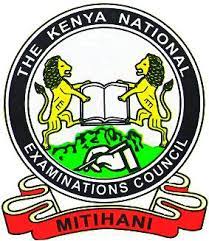
Kenya Certificate of Secondary Education
2017 Woodwork – Paper 1
Section A (40 marks)
Answer all the questions in this section in the spaces provided.
1 (a) State two advantages of water stains. (2 marks)
(b) State two disadvantages of spirit stains. (2 marks)
2 Name three types of saws in each of the following categories: (3 marks)
(a) Hand saws.
(b) Curve cutting saws.
3 (a) Explain the cause of each of the following timber defects: (2 marks)
(i) Heart rot
(ii) Knots
(b) List four types of glue used for veneering. (2 marks)
4 State four safety rules to observe when using a power drill to drill a hole in a piece of wood. (4 marks)
5 With the aid of a sketch, explain how the trueness of a try square is tested using a board and a straight edge. (4 marks)
6 With the aid of a labelled sketch, explain the ‘toenailing’ method of driving nails. (4 marks)
7 Figure 1 shows the blade of a Jack plane fitted in two different ways.
Figure 1

Explain the cutting effect in both cases. (4 marks)
8 (a) State four factors which may cause closure of a business. (2 marks)
(b) Sketch the following patterns of matching veneers. (2 marks)
(i) Diamond
(ii) Slip
9 With the aid of labelled sketches, illustrate two methods used to prevent a piece of wood from splitting at the end when drilling a hole. (4 marks)
10 Figure 2 shows a shaped block drawn in isometric projection.

Sketch the three orthographic views of the block in third angle projection. (5 marks)
Section B (60 marks)
Answer question 11 on the A3 pal er and any other three questions from this section in the spaces provided.
Candidates are advised not to spend more than 25 minutes on question 11.
11 Figure 3 shows two views of a truncated square pyramid drawn in first angle projection.

Copy the given views Full Scale and draw the following:
(a) Complete plan. (15 marks)
(b) True shape of the cut face.
(c) Development of the pyramid when opened along P-Q.
12 (a) Explain the following methods of laying veneers: (4 marks)
(i) Hammer veneering
(ii) Caul and press veneering
(b) Outline the procedure of shooting end grains of a piece of wood 50 X 100 mm using a bench plane and bench vice only. (5 marks)
(c) With the aid of sketches, describe the following timber defects:
(i) Twist
(ii) Bow
13 (a) Figure 4 shows boring tools labelled X and Y. (6 marks)

(i) Name the tools.
(ii) State one function of each of the tools in 13 (a) (i) above. (3 marks)
(b) Outline the procedure of sharpening the cutting blade of a Jack plane using an oil stone. (6 marks)
(c) Figure 5 shows a part of a bridle mitre joint.

Outline the procedure of marking and cutting the joint. (6 marks)
14 (a) Explain the difference between the following terms, giving two examples in each case: (4 marks)
(i) Public sector
(ii) Private sector
(b) Figure 6 shows a device used in a wood workshop.

(i) Name the device.
(ii) Name the parts labelled A and B.
(iii) State the function of the device.
(iv) State two safety precautions to observe when using the device.
(c) State six safety precautions to observe when using a surface planer.
15 (a) Using pictorial sketches, show the difference between square and secret haunch tenon.
(b) Figure 7 shows three views of a kitchen stool.

Given the following information:
Timber 250 X 25 mm — Ksh 100 @ 300 mm
50 X 50 mm — Ksh 60 @ 300 mm
Nails 38 mm long — Ksh 120 @ 1 kg
Sandpaper Ksh 20 @ sheet
Allow 35% profit and overheads.
NB/minimum timber lenth sold — 150 mm
(i) Prepare a cutting list for the materials required.
(ii) Calculate the cost of making the stool. (12 marks)